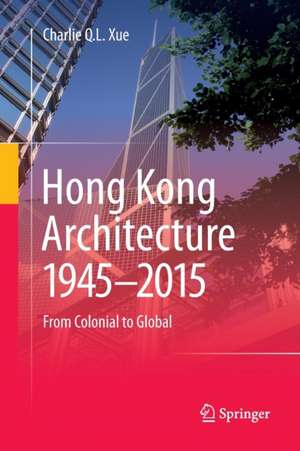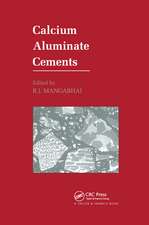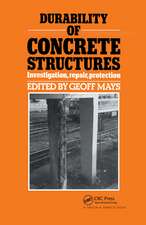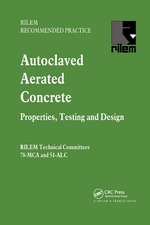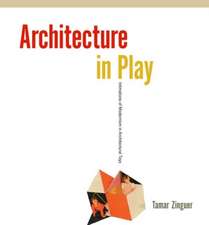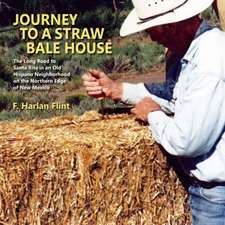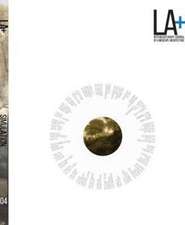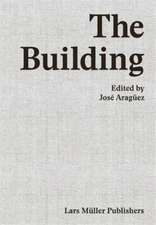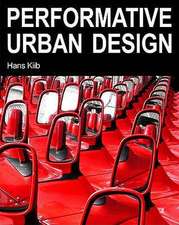Hong Kong Architecture 1945-2015: From Colonial to Global
Autor Charlie Q. L. Xueen Limba Engleză Paperback – 7 iun 2018
This book focuses on the transformation from colonial to global – the formation, mechanism, events, works and people related to urban architecture. The book reveals hardships the city encountered in the 1950s and the glamour enjoyed in the 1980s. It depicts the public and private developments, and especially the public housing which has sheltered millions of residents. The author identifies the architects practising in the formative years and the representatives of a rising generation after the 1980s. Suffering from land shortage and a dense environment, the urban development of Hong Kong has in the past 70 years met the changing demands of fluctuating economic activities and a rising population. Architecture on the island has been shaped by social demands, the economy and technology. The buildings have been forged by the government, clients, planners, architects, many contractors and end-users. The built environment nurtures our life and is visual evidence of the way the city hasdeveloped. Hong Kong is a key to East Asia in the Pacific Era. The book is a must-read for a thorough understanding the contemporary history and architecture of this oriental pearl.
Endorsement:
“Hong Kong sets an extreme example of hyper-density living. MTR’s Kowloon Station project offered my firm the unique opportunity to contribute to a new type of fully integrated three dimensional transport mega-structure, conceived as a well-connected place for people to live, work and play. Through Charlie Xue’s book, one can see how a compact city works and high density integrated development indicates a sustainable path for modern city making.”
Sir Terry Farrell, CBE, Principal, Farrells
"Well researched and refreshingly well structured, Charlie Xue's latest book comprehensively shows how Hong Kong's post-war urban architecture both tracks and symbolizes the former British colony's rise to success - a must read forarchitecture and culture buffs alike."
Peter G. Rowe, Raymond Garbe Professor of Architecture and Urban Design, Harvard University Distinguished Service Professor.
“An essential addition to the growing literature on Chinese architecture, the title of the book belies the full scope of Xue’s extensive history. Covering Hong Kong’s postwar transition from defeated colony to Pacific Age power house, Xue expertly traces the evolution of the city’s ambitious and innovative programs of integrated high density urban design and infrastructure, as well as changing architectural fashions. In a time when many Western governments have all but abandoned public housing programs, Xue’s book is a timely reminder of what can be achieved.”
Professor Chris Abel, author of Architecture and Identity, Architecture, technology and process and The Extended Self.<
Sir Terry Farrell, CBE, Principal, Farrells
"Well researched and refreshingly well structured, Charlie Xue's latest book comprehensively shows how Hong Kong's post-war urban architecture both tracks and symbolizes the former British colony's rise to success - a must read forarchitecture and culture buffs alike."
Peter G. Rowe, Raymond Garbe Professor of Architecture and Urban Design, Harvard University Distinguished Service Professor.
“An essential addition to the growing literature on Chinese architecture, the title of the book belies the full scope of Xue’s extensive history. Covering Hong Kong’s postwar transition from defeated colony to Pacific Age power house, Xue expertly traces the evolution of the city’s ambitious and innovative programs of integrated high density urban design and infrastructure, as well as changing architectural fashions. In a time when many Western governments have all but abandoned public housing programs, Xue’s book is a timely reminder of what can be achieved.”
Professor Chris Abel, author of Architecture and Identity, Architecture, technology and process and The Extended Self.<
| Toate formatele și edițiile | Preț | Express |
|---|---|---|
| Paperback (1) | 730.02 lei 6-8 săpt. | |
| Springer Nature Singapore – 7 iun 2018 | 730.02 lei 6-8 săpt. | |
| Hardback (1) | 736.16 lei 6-8 săpt. | |
| Springer Nature Singapore – 21 iun 2016 | 736.16 lei 6-8 săpt. |
Preț: 730.02 lei
Preț vechi: 890.27 lei
-18% Nou
Puncte Express: 1095
Preț estimativ în valută:
139.71€ • 145.32$ • 115.34£
139.71€ • 145.32$ • 115.34£
Carte tipărită la comandă
Livrare economică 14-28 aprilie
Preluare comenzi: 021 569.72.76
Specificații
ISBN-13: 9789811093074
ISBN-10: 9811093075
Ilustrații: XXIX, 337 p. 211 illus., 192 illus. in color.
Dimensiuni: 155 x 235 mm
Greutate: 0.51 kg
Ediția:Softcover reprint of the original 1st ed. 2016
Editura: Springer Nature Singapore
Colecția Springer
Locul publicării:Singapore, Singapore
ISBN-10: 9811093075
Ilustrații: XXIX, 337 p. 211 illus., 192 illus. in color.
Dimensiuni: 155 x 235 mm
Greutate: 0.51 kg
Ediția:Softcover reprint of the original 1st ed. 2016
Editura: Springer Nature Singapore
Colecția Springer
Locul publicării:Singapore, Singapore
Cuprins
Part I Government-led modernity.- Chapter 1: Reconstruction and resettlement after the War.- Chapter 2: Modernism coming to town – government low-cost housing and public buildings.- Chapter 3: Design forces and their strategies.- Chapter 4: Government control, building regulations and their implications.- Part II Private forces command.- Chapter 5: Serving the middle class – private housing and shopping mall.- Chapter 6: Rail village and mega-structure.
- Chapter 7: Commercial to Global.- Chapter 8: “Being Chinese in architecture” – growth of local architects.- Part III Backward and forward vision.- Chapter 9: Finding the roots and preserving our well-being.- Chapter 10: Pursuing excellence – towards a civic architecture.Notă biografică
Dr. Charlie Q. L. Xue has held teaching appointments in architecture at Jiaotong University, Shanghai; University of Texas, USA and City University of Hong Kong. Dr. Xue has nine books published including Building Practice in China (1999, 2009), Building a Revolution: Chinese Architecture Since 1980 (2006, 2009) and World Architecture in China (2010. His research papers were published in the international refereed journals like Journal of Architecture, Journal of Architecture and Planning Research, Urban Design International, Journal of Urban Design, Habitat International, Cities. His works are widely read and cited internationally. Xue’s research focuses on architecture of the Greater China area and design strategies of high density environment.
Textul de pe ultima copertă
This book focuses on the transformation from colonial to global – the formation, mechanism, events, works and people related to urban architecture. The book reveals hardships the city encountered in the 1950s and the glamour enjoyed in the 1980s. It depicts the public and private developments, and especially the public housing which has sheltered millions of residents. The author identifies the architects practising in the formative years and the representatives of a rising generation after the 1980s. Suffering from land shortage and a dense environment, the urban development of Hong Kong has in the past 70 years met the changing demands of fluctuating economic activities and a rising population. Architecture on the island has been shaped by social demands, the economy and technology. The buildings have been forged by the government, clients, planners, architects, many contractors and end-users. The built environment nurtures our life and is visual evidence of the way the city hasdeveloped. Hong Kong is a key to East Asia in the Pacific Era. The book is a must-read for a thorough understanding the contemporary history and architecture of this oriental pearl.
Endorsement:
“MTR’s Kowloon Station project offered my firm the unique opportunity to contribute to a new type of fully integrated three dimensional transport mega-structure, conceived as a well-connected place for people to live, work and play.Through Charlie Xue’s book, one can see how a compact city works and high density integrated development indicates a sustainable path for modern city making.”
Sir Terry Farrell<, CBE, Principal, Farrells
"Well researched and refreshingly well structured, Charlie Xue's latest book comprehensively shows how Hong Kong's post-war urban architecture both tracks and symbolizes the former British colony's rise to success - a must read for architecture and culture buffs alike."
Peter G. Rowe, Raymond Garbe Professor of Architecture and Urban Design, Harvard University Distinguished Service Professor.
“An essential addition to the growing literature on Chinese architecture, the title of the book belies the full scope of Xue’s extensive history. Covering Hong Kong’s postwar transition from defeated colony to Pacific Age power house, Xue expertly traces the evolution of the city’s ambitious and innovative programs of integrated high density urban design and infrastructure, as well as changing architectural fashions.”
Professor Chris Abel, author of Architecture and Identity, Architecture, technology and process and The Extended Self.
Sir Terry Farrell<, CBE, Principal, Farrells
"Well researched and refreshingly well structured, Charlie Xue's latest book comprehensively shows how Hong Kong's post-war urban architecture both tracks and symbolizes the former British colony's rise to success - a must read for architecture and culture buffs alike."
Peter G. Rowe, Raymond Garbe Professor of Architecture and Urban Design, Harvard University Distinguished Service Professor.
“An essential addition to the growing literature on Chinese architecture, the title of the book belies the full scope of Xue’s extensive history. Covering Hong Kong’s postwar transition from defeated colony to Pacific Age power house, Xue expertly traces the evolution of the city’s ambitious and innovative programs of integrated high density urban design and infrastructure, as well as changing architectural fashions.”
Professor Chris Abel, author of Architecture and Identity, Architecture, technology and process and The Extended Self.
Caracteristici
The only English volume to comprehensively cover the 70 years’ trajectory of Hong Kong architecture after WWII A reputable international author on modern Chinese architecture with a global view Crystallization of the author’s twenty-six years’ observation and engagement with the topic Includes supplementary material: sn.pub/extras
